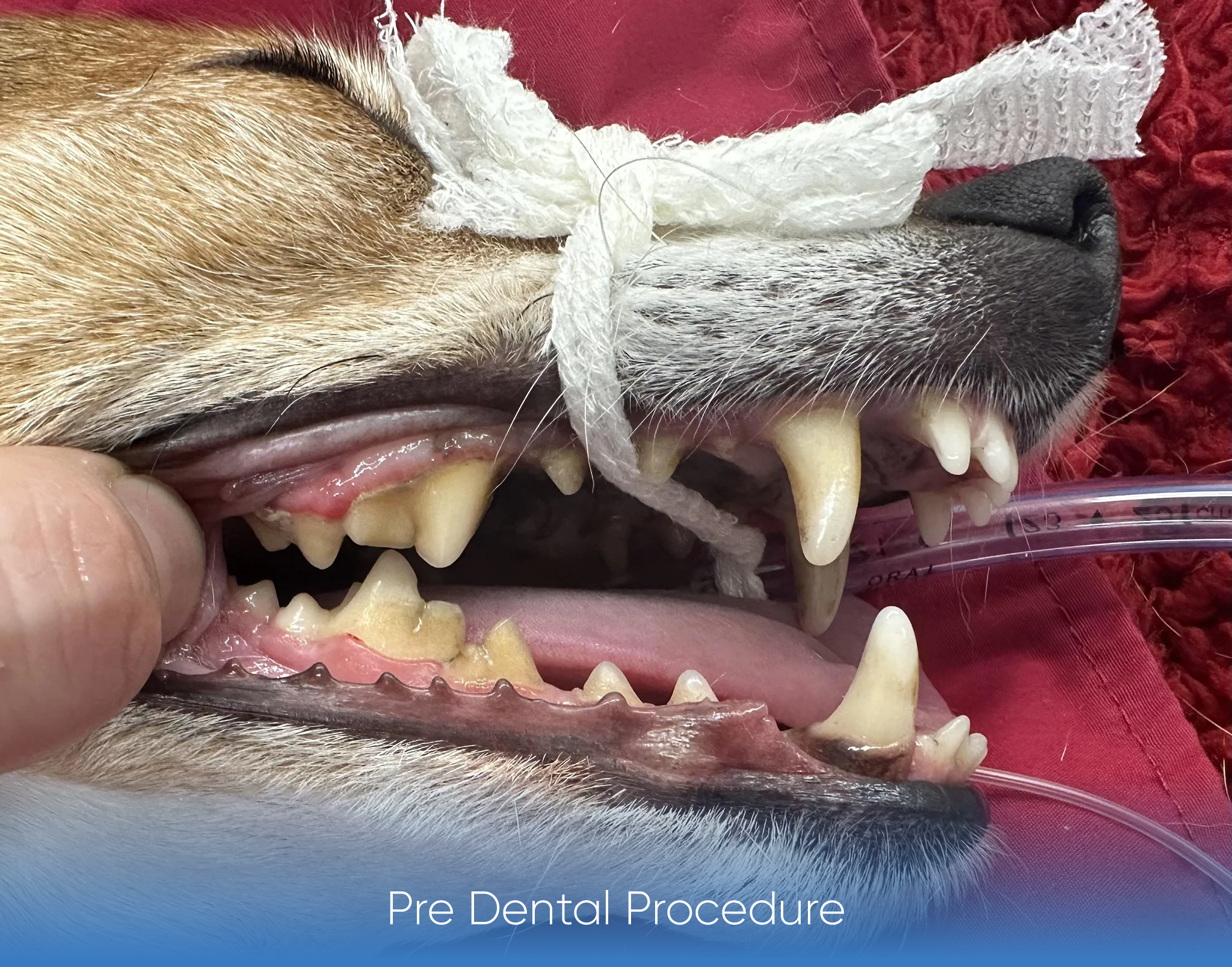Dentistry
Dentistry
Dental disease in dogs and cats is probably the most common ongoing disease process, present in around 70 percent of the population. It is often something that can go unnoticed by an owner, and may be picked up at a routine health check or booster appointment.
Dogs and cats are naturally predator species, and so their teeth are a different shape from human teeth. They have pointed jaggy teeth for catching prey and shearing flesh unlike our flatter topped molar teeth used to chew and grind food. This means that dental decay (caries) which is a common dental disease of humans, is less common in animals. The most common forms of dental disease in small animals are gum disease (periodontal disease), broken (fractured) teeth and due to the wide variety of mouth shapes with different breeds, we see an increasing number of puppies that have teeth developing in the wrong position to allow normal tooth eruption.
Periodontal disease starts to occur when a build-up of food debris and sticky saliva collects around the base of the teeth. Unless removed, this matrix, known as plaque, will harbour bacteria and ultimately cause gum infections that loosen the root attachments. With time, the plaque becomes mineralised, forming a smelly, greyish brown material known as dental tartar. The process then weakens the attachments to the jaw bones, which ultimately leads to dental pain, bad breath (halitosis) and formation of abscesses.
These teeth will need surgical removal and cannot be saved at this stage. Periodontal disease is a preventable condition, and owners can help their pets by instigating good home care at an early stage of their pet’s life. Tooth brushing is the best way to remove plaque, and most animals can be trained at home to accept this technique. There are also various food stuffs, chews and other products which can help.
Broken teeth usually occur as a result of some sort of collision (often when playing with another dog) or by chewing on something hard. Many dog toys are actually harder than teeth, and if the dog bites down too hard while chewing, the tooth can fracture, exposing the nerve in the middle of the tooth. Follow the link below to find out what we think about toys and tennis balls!
Broken teeth should always receive veterinary attention. We have modern dental X ray facilities which will allow us to image the tooth and the root and allow us to make an informed decision on whether the tooth can be monitored, repaired, or will need to be extracted.
Please click here for further information on this and to find out about possible options for tooth restoration.
Dental X rays also allow us to look for ‘missing’ teeth. These may simply be teeth that have fallen out, or have not formed at birth, but sometimes a tooth will be present under the visible gum line. When this happens, a cavity can form in the jaw bone, which may cause the jaw to fracture.
Dogs and cats have baby (deciduous teeth) which should normally fall out when the adult (permanent) teeth push through the gum. Some breeds of dog have an inherited problem that means the deciduous teeth are in the wrong place. Even though these teeth are not permanent, they may need to be removed to allow normal jawbone development and to prevent injury to the sensitive gum tissues in the mouth.
Cats tend to have different dental issues from dogs. They too may suffer from periodontal disease, but they can also suffer from a uniquely feline condition which can cause painful ‘holes’ to develop in their teeth. The roots can often have holes in them too, again our dental X rays will allow a full assessment of your cats mouth, and only the affected teeth need to be removed.


Our nurses can perform a dental check up on your pet and give you advice on the best ways to help your pet’s teeth. They can also give you one of our easy to follow fact sheets.